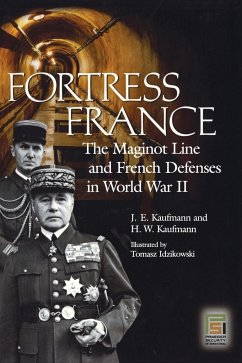The Maginot Line was the last great gun-bearing line of subterranean forts built before World War II. Although it acquired an unjustified reputation as a white elephant, the Maginot Line fulfilled the role for which it was built, allowing the French High Command the opportunity to mass its forces and counter the German invasion. Unfortunately, the French leadership failed to make the most of its assets, with the resulting disastrous outcome. During the 1920s, the French High Command formulated a number of offensive plans to strike at Germany, but by the end of the decade, it switched to defensive plans because of a lack of manpower. Work thus began on the Maginot Line and on other fortifications such as the French Mareth Line in North Africa and the heavy naval coastal defense batteries in Bizerte (Tunisia) and Toulon (France). The authors conclude that the Maginot Line offered the French High Command many opportunities from September 1939 until May 1940. They blame a failed French military doctrine for taking the initiative away from subordinates, laying the groundwork for the disastrous events of 1940 that left the French High Command paralyzed while German forces broke through the weakly held Ardennes.
Hinweis: Dieser Artikel kann nur an eine deutsche Lieferadresse ausgeliefert werden.
Hinweis: Dieser Artikel kann nur an eine deutsche Lieferadresse ausgeliefert werden.








